
Ron Dod, CEO, Visiture
Search engine optimization (SEO) is an established marketing and customer acquisition channel for retailers. SEO is one of the best customer acquisition channels because someone is actively searching for your products or categories using keywords through organic search. This is why Amazon and other marketplaces are so popular—because they are similar to Google but, instead, focused solely on e-commerce, in comparison to Google, which is focused on pretty much everything.
Even though SEO is an old tactic for retailers, it is, unfortunately, changing every day. SEO tricks that might have worked in the past might not be the best tactics to use today or in the future. Throughout my time in the SEO field, there are many times that I have come across retailers who still utilize outdated tactics and think they remain effective, even though they are not.
Here are the top tactics that I have come across that are no longer effective for online retailers and what you should be doing instead.
Focusing on Only Short-Tailed Keyword Phrases
Focusing on short-tailed keyword phrases, which are short keyword phrases such as “shoes” or “blue shoes”, has always been fool’s gold, mainly due to the lack of data or the lack of skill to use the data. Short-tailed phrases are the least likely to convert. In the graph below, you can see that short-tailed phrases, such as “shoes” also have a higher cost of competition and a lower probability of converting than a more descriptive, longer-tail term, such as “red Nike men’s running shoes.”
Short-tailed keyword phrases also don’t have as much search volume as other keyword phrases. If you check out the example below, you can see that the clear majority of keyword searches are not for the phrase “water filters,” for this particular company. The keyword phrase “water filters” is only .5% of what consumers searched for in relation to this company’s website’s content pages. Over 500,563 people searched in the past 30 days and only 2,882 searched for “water filters.” Had the retailer just been solely focused on the keyword phrase “water filters,” it would have lost out on a big chunk of market share in organic search engines.
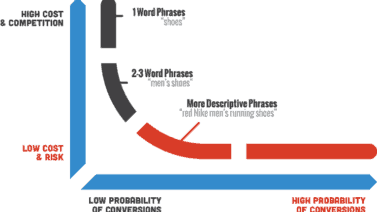
Overall, focusing on the short-tailed keyword phrase can be costly because, through my experience, the majority (around 96% or more) of searches are for longer-tailed keyword phrases. Plus, more general, short-tailed terms do not convert as well as their long-tailed counterparts.
Focusing on “Keyword-Based” In On-Page Optimization
On-page optimization is one of the key ways that Google judges a website for quality and understands what makes a web page a good match for someone searching the engine. If your web page doesn’t say “Black Cat,” then how will Google know it is a good source if someone searches for “Black Cat”? To tell Google what your web page is about, you need to optimize these key points on each of your web pages for the particular keyword phrase(s) you want that page to rank for:
- Meta Title
- Meta Description
- Header Tag
- First 100 Words in the Body Content (if Applicable)
- URL (Only 2-3 Words Max)
One issue is that retailers have been stuffing or over-optimizing their content using the above points of optimization. This would be an over-optimizing example that a retailer might use if they are trying to rank for the keyword phrase “Black Cat”:
- Black Cats | Black Kittens | Black Cat (meta title)
- Visit BlackCats.com for the latest black cats, the latest black kittens, and the best black cat you can buy today. (meta description)
- Black Cats, Kittens, and Cat (header)
- The body content contains the word too often, has grammatical errors, and is hard to read.
- com/black-cats-black-kittens-for-sale
As you can see, this content is not user-friendly. The meta description is what Google uses as a default text for the description in each of its listings, and this one would not lead a typical consumer to click. If the meta description is very poor, Google may use content on the website in lieu of the meta description which is not optimal.
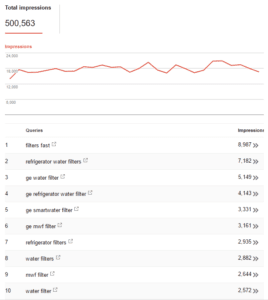 This type of web page would perform poorly in Google’s search index if someone searched Google for “Black Cat.” Here would be a better, under-optimized web page with good calls to action to entice consumers to click on them:
This type of web page would perform poorly in Google’s search index if someone searched Google for “Black Cat.” Here would be a better, under-optimized web page with good calls to action to entice consumers to click on them:
- Black Cats at BlackCats.com – Free Shipping Over $50 (meta title)
- Visit BlackCats.com for the latest black cats available for a new home. Our black cats are the finest quality, coming from a long line of purebreds. (meta description)
- Black Cats (header)
- The body content contains 150 words of good quality content explaining the product or category, with the focus keyword one time in the first 50 words.
- com/black-cats
You can see this version is much better, even though the writer may not know anything about Black Cats. Google would see this version as having quality, and the user doesn’t need a Ph.D. in SEO to understand what the web page is about.
In today’s modern SEO world, make sure that you focus on the user and the user experience. Put a CTA (call to action) and brand differentiator in the meta information to separate yourself from your competition and entice customers to click on you. This is a modern tactic that is very effective for retailers in SEO.
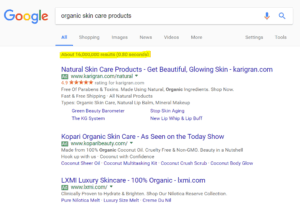 Creating Short-Form Content
Creating Short-Form Content
For every keyword phrase in Google, there are millions of different results Google will show for them. In the example below, there are 16,000,000 results for “organic skin care products.” It does us no good to be beyond the #8 position, so, in Google, we want to get within the 1-8 position and beat out millions of different results.
How do you do this?
You do it through creating better content than what ranks high for those phrases! Long-form content is generally more favorable in Google, and Google ranks it higher because it satisfies a searcher’s intent more than something short. A long piece of content has more information, more products, or more categories, which leads the user to stay on the page longer. The longer they are on the page the more Google values this page as a “quality page”.
Do not take our word for it. Brian Dean at Backlinko did a study by analyzing 1,000,000 search results and found the total word count on pages correlated to a higher organic search engine ranking.
Creating longer content generally means a better piece of content because it is more in-depth and comprehensive. This type of content also does better in organic search engines because searchers stay on it longer and engage with it longer. As retailers, you want to make sure your content marketing is in-depth and long form. Make sure you have plenty of products on your category pages, and that your product descriptions fully solve the searcher’s intent when they are looking for content.
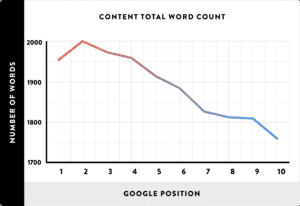 Focusing Only on Technical SEO
Focusing Only on Technical SEO
Technical SEO, which is focusing on optimizing the website, will always be around and always be a part of SEO, but it is not as prevalent as in previous years. Off page optimization factors are gaining much more traction than ever before for retailers. In 2011, there were hundreds of thousands of e-commerce sites running on custom frameworks, and all needed technical SEO to increase their rankings in Google. If they were using custom cart solutions, we could generally come in, fix the technical issues, and then they would shoot up their Google rankings for thousands of phrases.
In 2017, this isn’t the case, as much as it was back then. Platforms such as Magento, BigCommerce, and Shopify have created very search engine-friendly cart solutions, which allow retailers to have much better, technically sound search engine-friendly websites.
There will always be a need for SEO technical help. Websites will never be fully search engine-friendly. Plus, sometimes retailers can make their websites less search engine-friendly with mistakes while using the platform.
However, just focusing on technical SEO is a recipe for disaster because there is only so far you can go with optimization for technical factors before you have to look at backlinks and other relevant off page optimization factors which would take the retailer to the next level of keyword rankings in Google.
Heavy Internal Links
Using internal links was a very good tactic but it was abused in the past (like many tactics), and it is not as favorable as before. Many times, when we optimize for content, using an internal link is acceptable and a best practice. However, if you use too many, it dilutes your link profile and does not pass as much authority to different pages.
Only use internal links if they make sense for the user, such as when you need to explain something. If you mention a technical term like “search engine optimization,” this would be a good opportunity to link to a page defining search engine optimization. Or, if you discuss “HDMI Cables,” you can link it to your “HDMI Cables” landing page. Otherwise, do not use it as a tactic to increase rankings because, generally, it will not help.
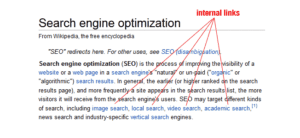
Publish & Pray Content Marketing
Many retailers incorrectly believe that once they publish content it will rank high in Google and everyone will share it. This cannot be further from the truth. We see a lot of “publish and pray” content marketing strategies based on the idea, “Create good content and good things will happen.”
The content marketing equation is [Content Creation + Content Promotion = Success]. You need to promote your content via social media, newsletters, emailing, influencer outreach, media lists, display advertisements, and more to promote your content.
Promoting content through unconventional ways is a great way to pick up backlinks through key influences. One example is a post we had a part in during 2014. It was promoted on Facebook and has ranked #1 in Google for “unhealthiest foods” for 3-plus years. You can see below from the image, it was linked to from an influencer who saw it on Facebook. Imagine that!
Promote your content and do not “publish and pray.” Otherwise, your competitors will leave you in the dust with a solid content creation and promotion strategy, while you just have the content creation part nailed down.
Body Content on Category Pages
This can be a solid strategy, sometimes, when e-commerce sites have very little content on products and do not utilize a blog for content creation. However, this strategy is not as effective as it once was for ranking category pages in Google’s search results.
The reason for this is that it doesn’t provide the user more value which means Google will not find it more valuable and thus won’t give you more authority for it. Generally, the content discusses the category and the product, but the user generally wants to see images of products when they land on a category page. So, most times, the content is not useful for the user.
Body content is not a bad strategy to utilize if you want to explain the products or categories, but do not expect it to really help you for ranking in Google’s search results.
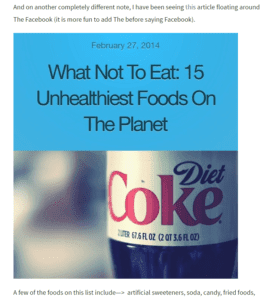 Low-Quality Guest Blogging
Low-Quality Guest Blogging
Guest blogging has been a very popular link-building tactic, but it has been abused and given a bad name throughout the years. Doing it right and through quality content to the right audience is never a bad strategy. However, focusing on producing low-quality content for low-quality sites for the sake of a link is a bad idea. It just doesn’t work for retailers.
Google is very smart about understanding what is a quality link and what is not. If you get a link from a particular web page (such as blog) and the content is poor, no one has shared it on social media, and no one has backlinked to it, then Google will think the link is of little value and give you no credit.
On the flip side, if the link is very relevant to you, it has some social media signals, it has some comments, and it has a high keyword relevance to you, then Google will reward you for it because people are talking about you and linking to you.
Paying for Links
Affiliate links and paid links can help you, which might be a shock to some retailers who were told otherwise. Some affiliate companies claim it will not help you, but, a lot of times, this is a lie because they do not want retailers to think they violating Google’s Webmaster Tool’s guidelines. The issue is not that Google will penalize you for it. Google may decide that links do not count as much as they did before, and then you’ll drop in their search algorithm. You are not being punished, exactly. Google is saying you are not as much a quality search result as before. Therefore, you may drop in the search engine rankings.
To combat this, focus on doing everything the right way so you do not experience a drop. Make sure all the low-quality affiliate links you may have are using a “rel=nofollow” tag, which tells Google to not crawl the link, on the affiliate backlinks. Make sure all paid links also use this tag; otherwise, Google may figure out someday it is a paid link and take away the authority for it, which will make you lose value—and you obviously do not want that to happen.
Conclusion
SEO can be a difficult marketing channel because of the constant changes, but it doesn’t have to be. Using effective strategies is critical because, as retailers, we only have limited resources to utilize and must use them efficiently.
Visiture is a search marketing agency that primarily serves midsized e-commerce companies.
Favorite